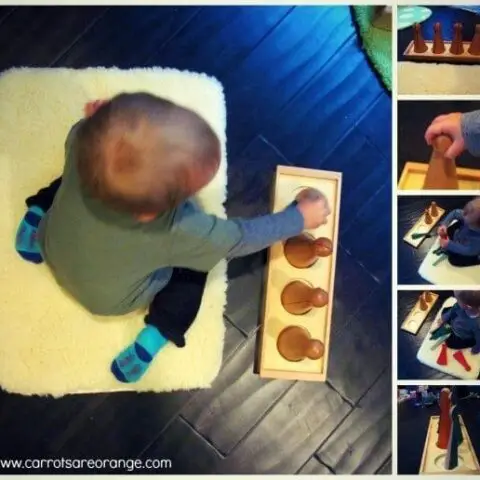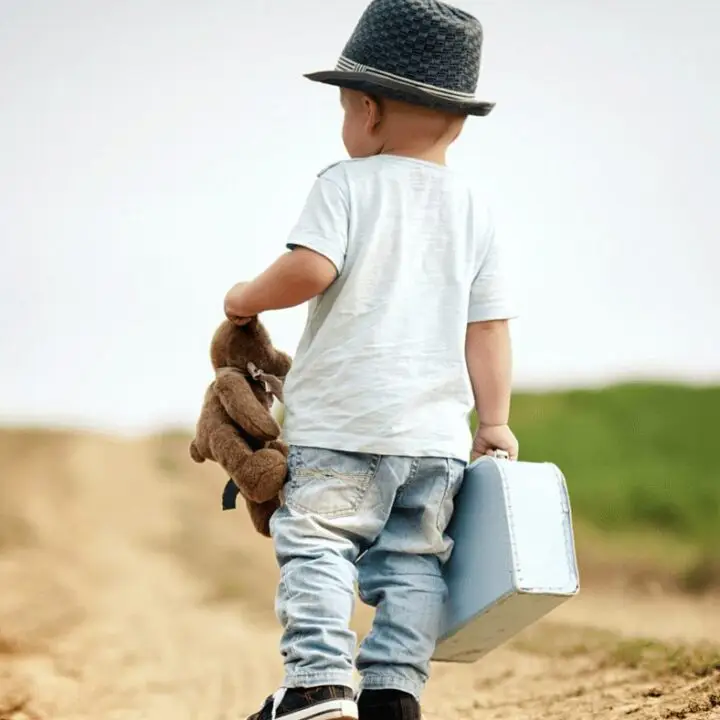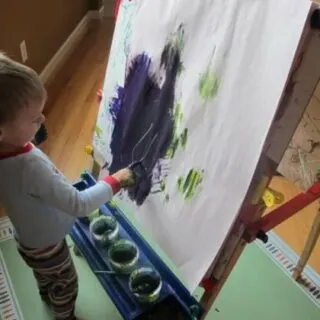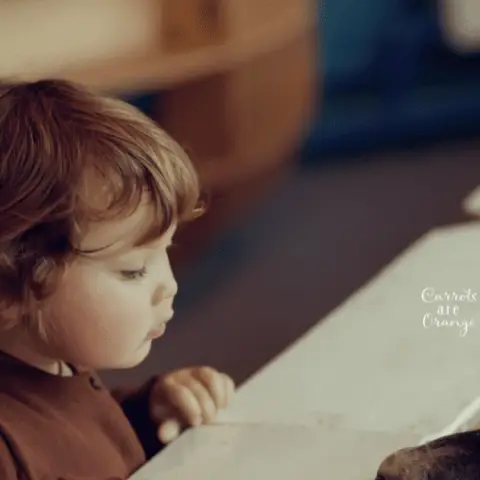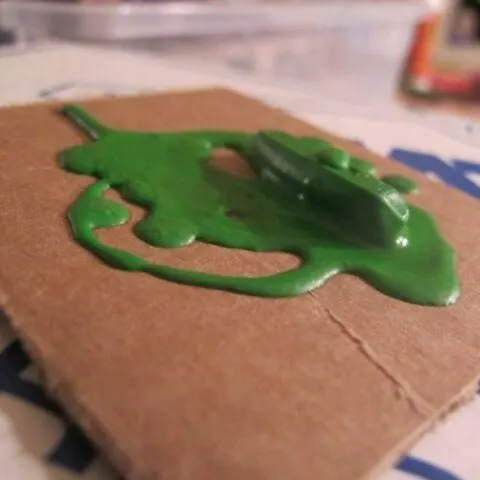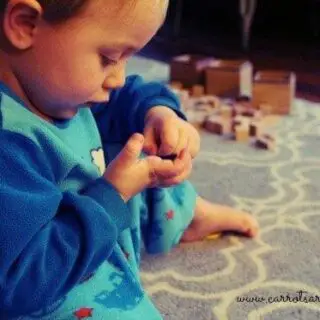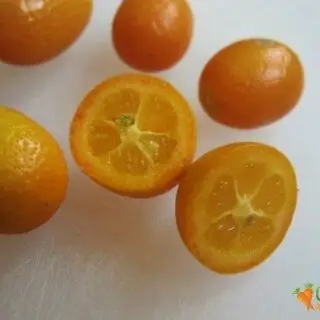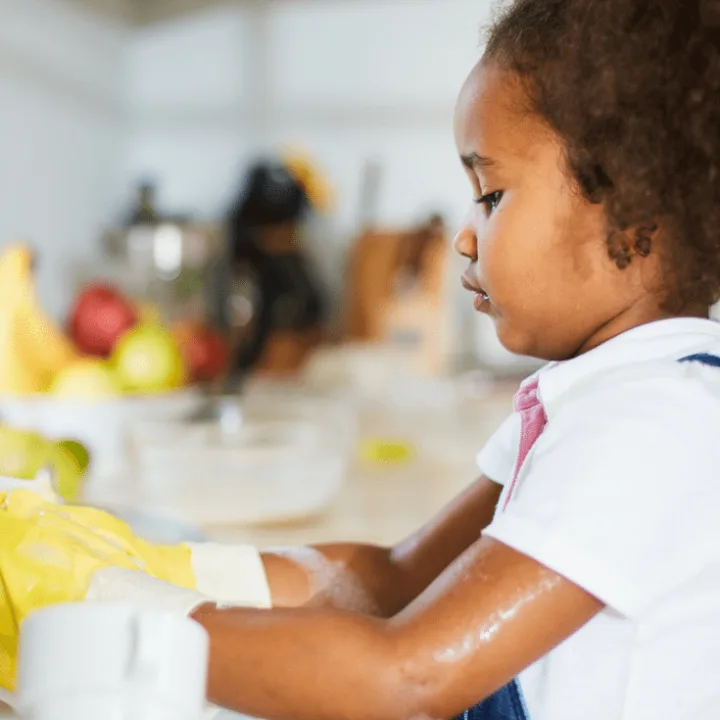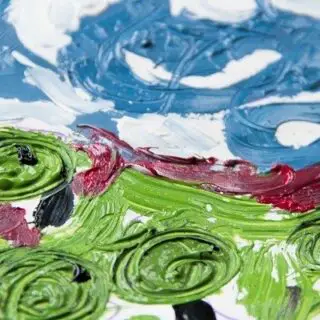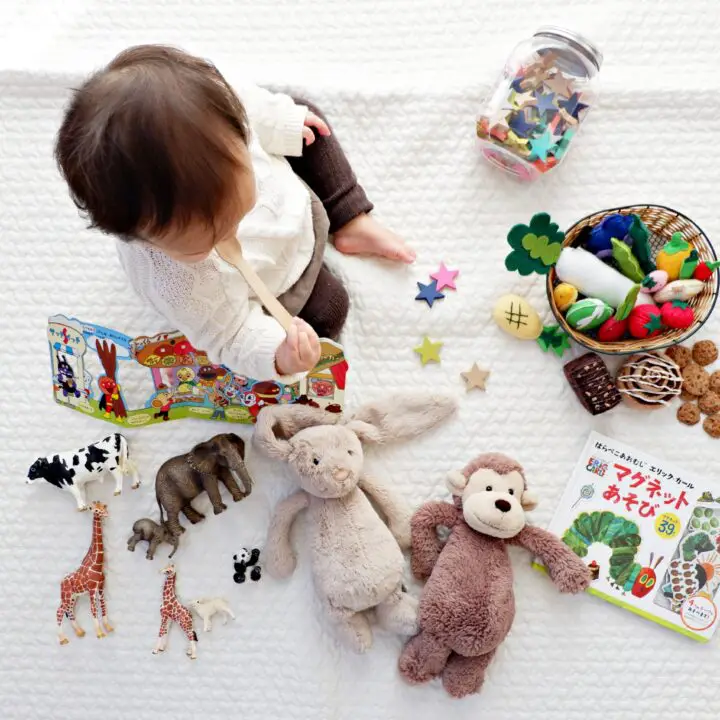Do you want to add Montessori education and activities into your children’s home routine? With just a few adjustments, it's possible to create an inviting learning-focused space with a range of fun activities.
Ever wondered how to unleash your toddler's inner genius while keeping them engaged and happy? Look no further! Welcome to the captivating universe of the Montessori toddler.
In this post, we're going to delve deep into the world of Montessori education for toddlers. We'll explore the secrets, the tips, and the fantastic journey your little one can embark upon in the loving arms of Montessori toddler education.
Montessori Toddler: Activities & More
This post includes the 101 on the Montessori Toddler and 20+ easy toddler Montessori activities to do at home! From playing dress-up to finger painting and building block towers, these activities are sure to keep your little ones entertained for hours.
With simple supplies like paper plates and cotton balls, you can create memories that will last a lifetime. So the next time your toddler needs something stimulating to do, check out this list of fun ideas!
Children who have a creative outlet will feel less frustrated and throw fewer tantrums than children who have no way of expressing themselves creatively.
It may be easier than you think to create an environment for your toddler to learn and enjoy different ways of expressing his or her ideas, even before being able to speak in coherent sentences.
The following ideas are easy and cheap to incorporate into any environment and the tips include practical ways to reduce mess.
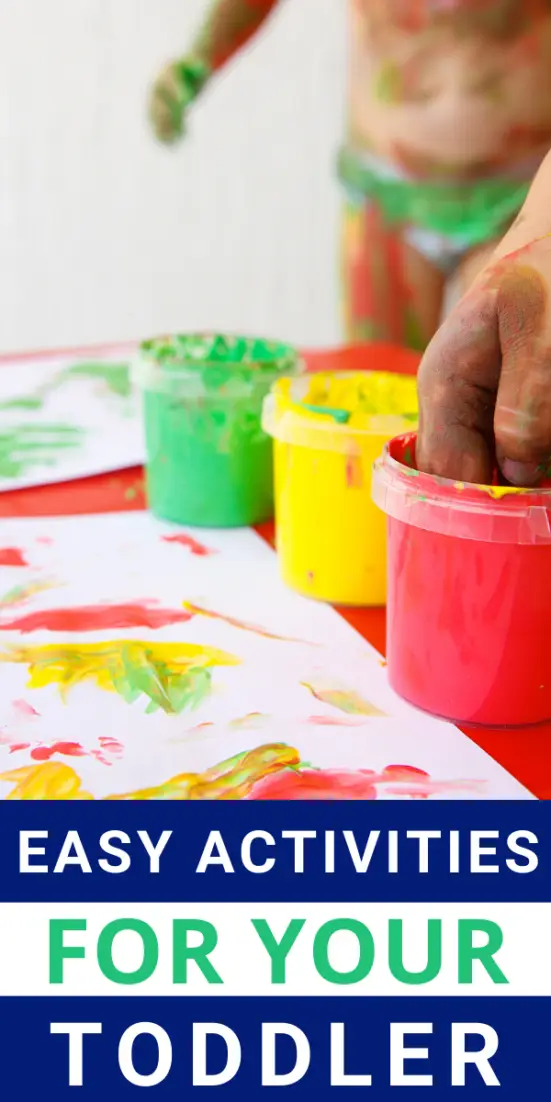
Montessori Toddler: What's the Buzz About?
Montessori: More Than Just a School, It's a Lifestyle!
Montessori toddler education isn't just about school; it's a way of life, man! It's all about letting your child explore, learn, and grow naturally. So, what's all the buzz about? Well, let me break it down for you:
Montessori toddler education isn't just about school; it's a way of life, man! It's all about letting your child explore, learn, and grow naturally. So, what's all the buzz about?
Well, let me break it down for you:
- Child-Centered Learning: Unlike traditional education, Montessori toddler programs focus on the child's unique needs and interests. It's like giving your kid the keys to their own learning journey.
- Hands-On Exploration: Forget boring textbooks and endless lectures. Montessori encourages hands-on learning, letting kids dive right into activities that captivate their curious minds.
- Independence Rules: Montessori empowers toddlers to make choices, solve problems, and develop self-confidence. It's all about teaching them to fish rather than giving them a fish.
- Respect for Each Child: In Montessori, every child is respected as an individual. Their pace, interests, and style of learning are valued. It's like a warm, cozy hug for your kid's self-esteem.
FAQs: Montessori Toddler Edition
Is My Toddler Too Young for Montessori?
Well, partner, Montessori toddler programs typically start around 18 months, but it's never too early to jump on the Montessori train. Young minds are like sponges, ready to soak up knowledge, so the sooner, the better!
Do I Need Special Montessori Materials at Home?
Nah, you don't need to break the bank. Montessori-inspired activities can be created from everyday items like wooden blocks, spoons, and pots. Get creative, and your toddler will be delighted.
Will My Toddler Miss Out on Social Skills?
Not a chance! Montessori programs emphasize social interactions. Your toddler will learn to share, cooperate, and make friends. It's like a mini social club for little ones.
What If My Toddler Doesn't Want to Do Montessori Activities?
Hey, we all have off days, right? It's cool. Montessori is all about following your child's lead. If they're not into an activity, no problem. Let them choose something else that tickles their fancy.
Montessori Toddler: Beyond the Classroom
Montessori Values at Home
Montessori isn't just a school thing; it's a lifestyle. Here are some tips to bring that Montessori magic into your home:
- Create a Montessori-Friendly Environment: Arrange your toddler's toys and materials in a way that encourages independence and exploration.
- Promote Independence: Let your child dress themselves, pour their juice, and choose their snacks. It's all about fostering self-sufficiency.
- Respect Their Choices: When your toddler chooses an activity, support their decision, even if it seems a bit odd. It's all part of their unique learning journey.
- Embrace Messiness: Montessori encourages hands-on exploration, and that can get messy. Don't sweat it; it's all in the name of learning.
Montessori for Life
Montessori toddler education isn't just about the here and now; it's about setting a foundation for a lifetime of learning and success. Here's what you can look forward to down the road:
- Confident and Independent Kids: Montessori toddlers grow up to be confident, self-sufficient individuals who know how to think critically and solve problems.
- Lifelong Love of Learning: Montessori instills a passion for learning that lasts a lifetime. Your child will always have that thirst for knowledge.
- Respect for Others and the Environment: Montessori values extend to respect for others and the world around us. Your child will be a little eco-warrior with a heart of gold.
Montessori Toddler Activities
Bringing Montessori into your home or classroom doesn't have to break the bank. There are simple and inexpensive ways to put together and present Montessori Infant & Toddler Activities.
Here are a few ideas for one-year-olds and two-year-olds!

Montessori-Inspired Toddler Activities to Do at Home
#1 – Implement a Quiet Hour
Designate a specific time – this might be an hour or two every day – where your children can use the space to engage in quiet activities such as reading, puzzles, and crafts.
You could also encourage them to write stories, draw pictures or explore with building blocks. These activities encourage problem-solving skills and help create focus and concentration, which is fundamental for learning.
#2 – Discovery Bottles
Sensory bottles are wonderful materials for toddlers and infants. Plus the use of sensory bottles begins to ingrain important lessons of mindfulness that will help with anxiety later in life.
Babies are mesmerized by discovery bottles. These bottles ignite the senses Isolating a quality is a great way to approach bottles whether with sight (e.g) color, sound (loud versus quiet), texture (soft versus hard), or even smell.

#3 – Sorting and Counting Activities
An important part of developing an understanding of mathematics is to understand quantity and numbers. So help your child develop their numerical skills by engaging them in sorting and counting activities. You can use everyday objects or something more specific such as coins, craft materials, or rice.
#4 – Nature Basket
Bring nature indoors with a nature basket or nature table filled with various items preferably you and your child have collected over time.
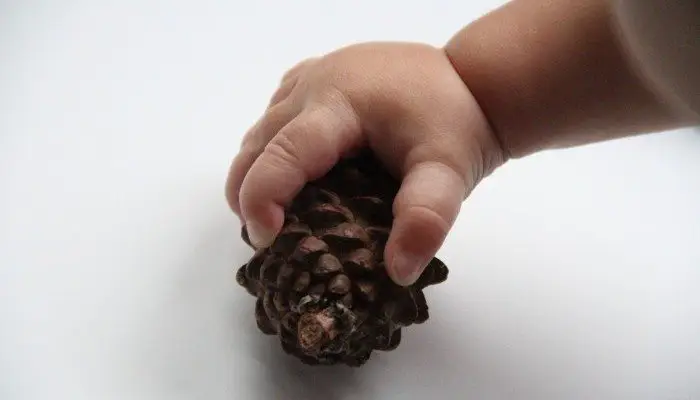
#5 – Hole in a Box or Can
Recycle a box or can, cut a hole in it, and experiment with different items like Pom Poms, coins, beads, beans, or pasta.
#6 – Sand & Water Play Toddler Activity
Go to the beach, go find a sandbox at a park. Let your child get his fingers, hands, and feet dirty. Give the opportunity to explore with tools for scooping, sifting, and pouring.
Water play can be as simple as taking a bath. I sometimes lay out a towel or shower curtain with a medium-sized container of water for my infant.
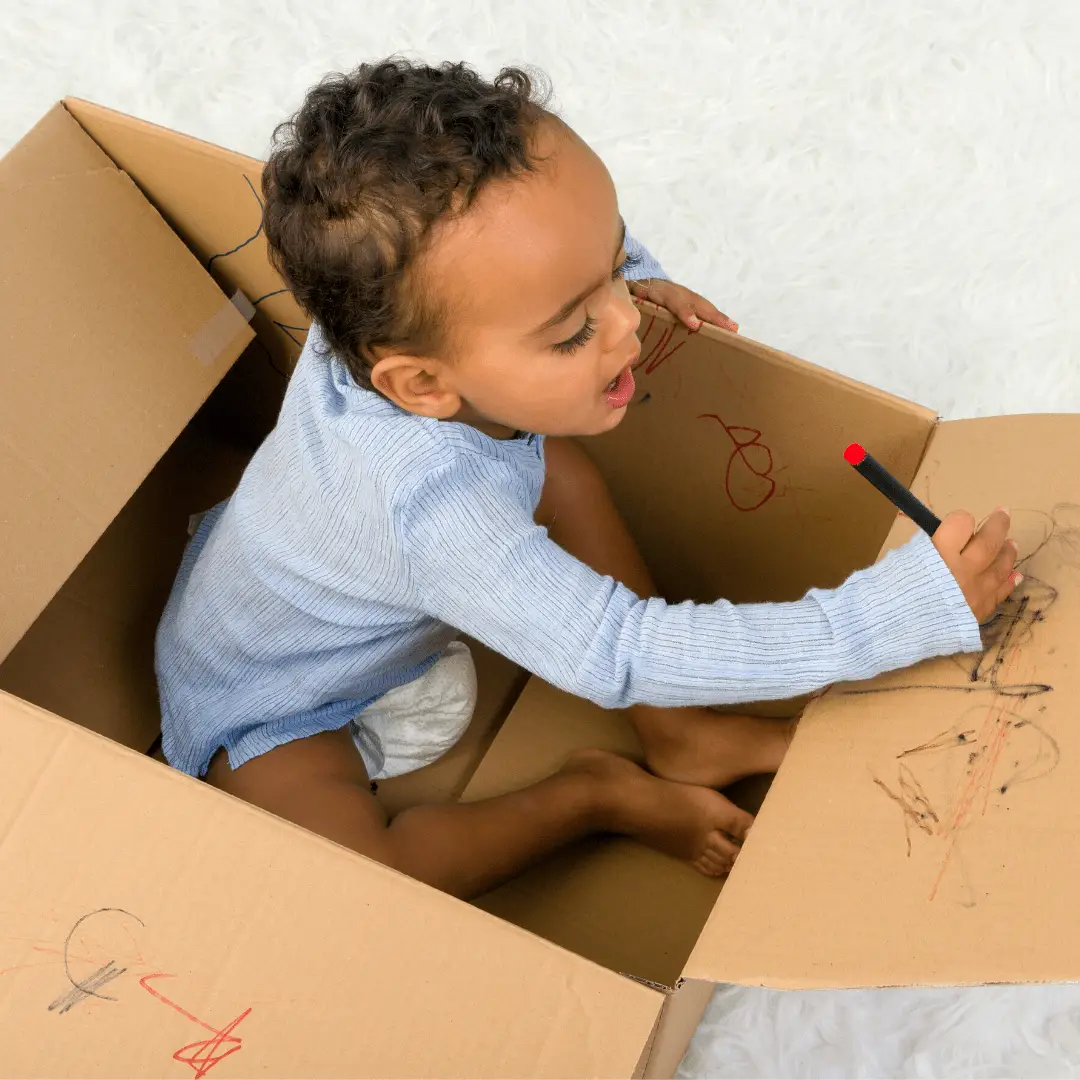
#7 – Textured Balls
My one-year-old can't get enough of these textured balls. Great for sensory exploration, playing, and early science concepts. If your child enjoys the sense of touch, make texture cards or rough & smooth boards.
#8 – Pounding
There are a number of hammering or pounding materials available for infants and toddlers. My sons like this hammering toy. Pounding works those hand-eye coordination skills. My son also enjoys “making music” with the pounding sounds.
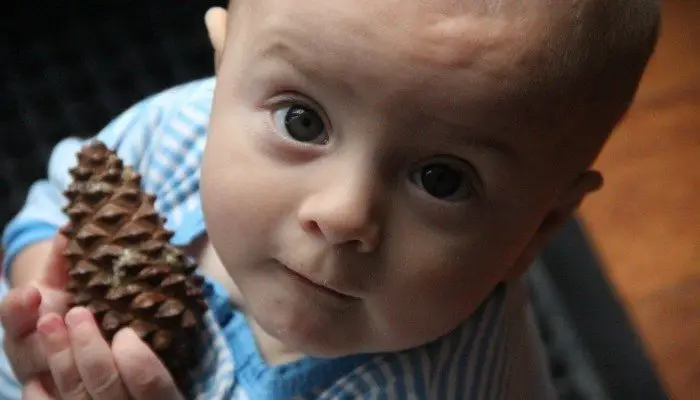
#9 – Finger Painting Toddler Activity
There are plenty of safe finger paints to buy off the shelf but also try mud and these amazing homemade fingerprinting recipes from Tinkerlab.
#10 – Real-Life Tools for Toddlers
Yes, you read correctly. Young children can explore with real tools. Obviously, don't hand a child a chainsaw but the basics are a good start. Make sure you introduce and demonstrate how to use the tool (whether he takes your lead or not!) in a safe environment where the child isn't going to break anything or injure anyone.
Montessori-inspired playtime offers a great opportunity to demonstrate everyday, real-world activities. As you and your children explore the playroom, teach them how to perform useful skills such as setting the table or helping put away groceries.
Taking these “real-world” tasks and breaking them down into their individual parts helps foster the development of organizational skills. Model the desired behavior and allow your children to take the lead in perfecting the task—and don’t forget to have fun!
Montessori Services offers a Tool Set for Young Kids. The whole set is not infant and toddler appropriate but a few items, like the small hammer and the stubby screwdriver, are perfect for that stage.
You could also go to your local hardware store and purchase large nuts and bolts (to avoid choking hazards and help those little hands develop) to screw on and off.
You can also make an easy nuts & bolts tray with a simple trip to your local hardware store or toolbox!
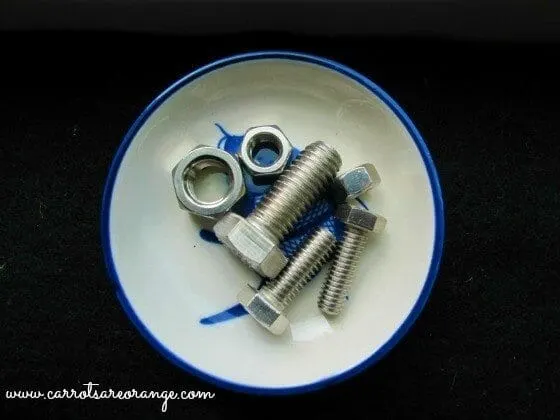
#11 – Montessori Music Basket
This one is so much fun! Our music basket is filled with a mix of “toy” instruments (like Melissa & Doug's Band in a Box, which we love!) and real instruments I found at a local thrift store. Score! Add a few fun books and you're good to go!

#12 – Climbing & Balancing
Find a safe space to let your child climb up and climb down. You don't need to hover and you don't need to totally hands-off if that makes sense. Just give the child an opportunity to practice those big gross motor skills.
Examples include an open gym session at a local community center, climbing pillows, climbing stairs, and mini scooters (my one-year-old likes to sit or kneel on a scooter and push himself around the yard).
#13 – Tearing Paper Activity
Sounds odd, I know, but this activity is beneficial and worthwhile for a wide age range. The sound of the paper tearing and the fine motor work makes this simple activity perfect for kids and caretakers.
Offer different types of paper to explore sound, textures, and the use of different muscle groups depending on how difficult tearing the paper may be for the child.
#14 – Pulling Scarves from a Box
Scarves offer a variety of learning for kids with color, texture, coordination, and fine motor. Stuff an old tissue box with scarves and your child will adore you!
#15 – Pulling Laces or Ribbons through a Hole
Anchor the ribbon or lace with knots at each end so that the child can pull from one end and then pull from the other end. Super simple and inexpensive!
#16 – Craft Time
Sometimes, something as simple as sticking some stickers onto a page can help your child feel proud of creating something special. Of course, you can do so many different activities with easy-to-find craft products.
Try to have at least one time, once a week, when you sit down with your child and help your child to discover the joys of making things.
Collect colored and patterned papers, some wool or cotton threads, glue, and a packet of “googly eyes” and you'll have everything you need for your child to make faces, dolls with clothes, or a variety of animals.

Finger paints are popular with toddlers and help your child to explore colors, mix colors, and different textures. An art smock with long sleeves prevents the majority of paint on clothes, and buy children's paints that are water-based and non-toxic if ingested when fingers go into mouths.
Contain the craft mess by sitting at a table or in a high chair and using the tray as a table.
Give your child a chance to play with their creations and display them proudly. A magnetic or corkboard can be a great way for your child to have a regular space to display their craft and you can rotate the display, without taking up a lot of space throughout the house.
#17 – Drawing and Coloring In
This is a great precursor to the world of writing. Give your toddler some crayons and some paper. At first, your child will only scribble and create blobs of color that could be anything, but slowly your child will develop better skills and be able to draw pictures.
A wipe-clean board can be an easy way to teach some basic drawing skills. Teach your toddler how to draw shapes and encourage your child to copy some of the shapes with their own drawings.
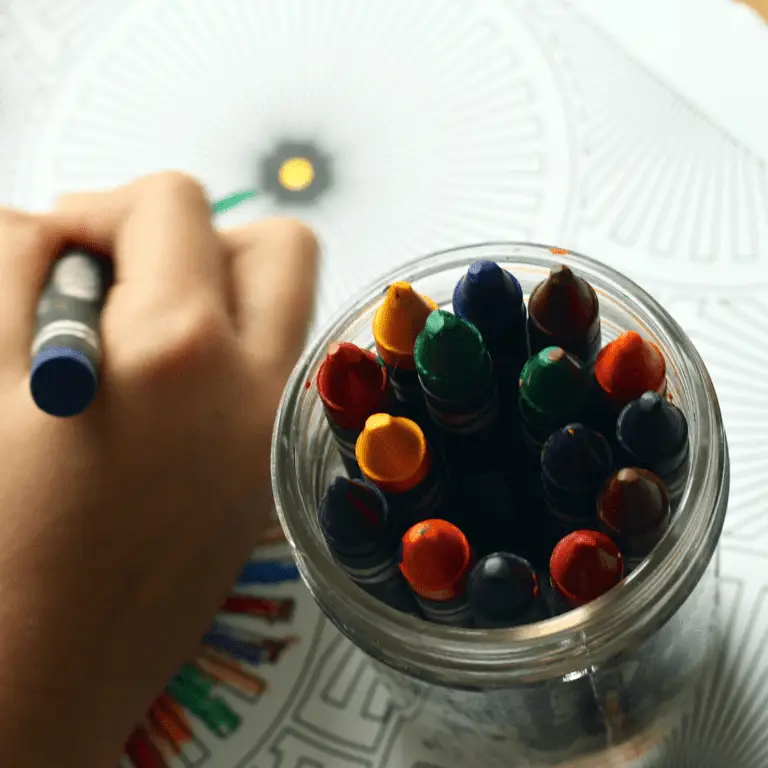
A coloring-in book with large and relatively simple pictures will give your child a chance to learn how to use colors to shape their world. Don't expect a toddler to stay within the lines though, as that will take years to develop.
Remember, this is about giving your child a way to express themselves and to learn skills like how to hold a crayon or pencil.
Your toddler can do this by themselves, as you do something else nearby. Coloring in can be a great activity while you prepare dinner, for example, as your child can sit at the table and color in a picture with minimal supervision. Alternatively, invest in an adult coloring-in book and enjoy the relaxation of coloring in too.
#18 – Nature Time
Take your child outside and explore the natural landscape. Look for different shapes, sizes, colors, and textures to compare and discuss. Point out the shadows or clouds in the sky that take different shapes. Nature provides an excellent setting for developing creativity and curiosity in children.
This creative activity starts by taking a walk outside. Show your child different things from nature to collect, such as leaves, gum nuts, blades of grass, seeds, sticks, pebbles, and flowers. Allow your toddler to choose some items to bring home.
You may wish to keep a collection for a day or two, or you may want to incorporate the items into craft time. Paint leaves different colors to press onto paper to create “leaf prints” or simply stick the nature items onto paper in a creative and fun way.
This activity helps your child to see that different things can be used as creative tools and encourages your child to look beyond the traditional textures in art.
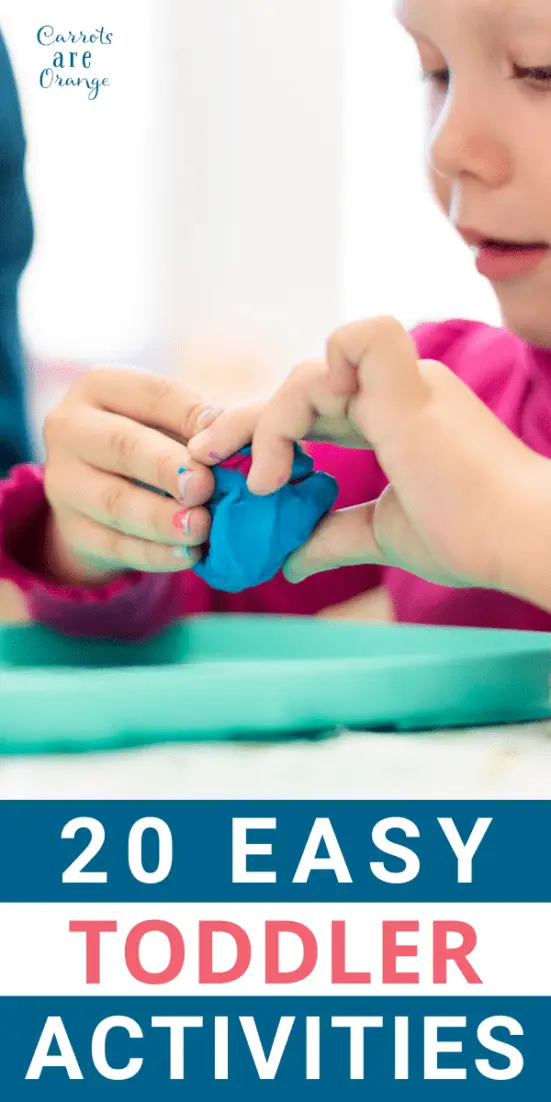
#19 – Play Dough
This is a great tool for creative expression. Buy play dough in different colors, or alternatively, make it at home. You can make it together during cooking time, and allow your child to choose the colors you dye it with food coloring. Use a rolling pin to flatten the dough and then cookie cutters to cut it into shapes.
Allowing your child to manipulate the dough into a variety of shapes is very good as it builds up their manual dexterity skills and strengthens muscles in the hands that they will use later on for writing.
Encourage your child to roll the dough into a long snake, then curl the “snake” around into a “snail” and create other animals.
Home-made play dough will keep in the refrigerator for a few months, so you can get hours of creative play out of one batch.
If you are concerned about playdough getting onto carpets at home, create a safe place to use the playdough with a plastic splat mat, or a layer of newspaper sheets in a bigger area than the playdough area.
Then, you'll find cleaning up is easy as you can gather the mat or the newspaper sheets and get rid of all the little bits of play dough or plasticine together.
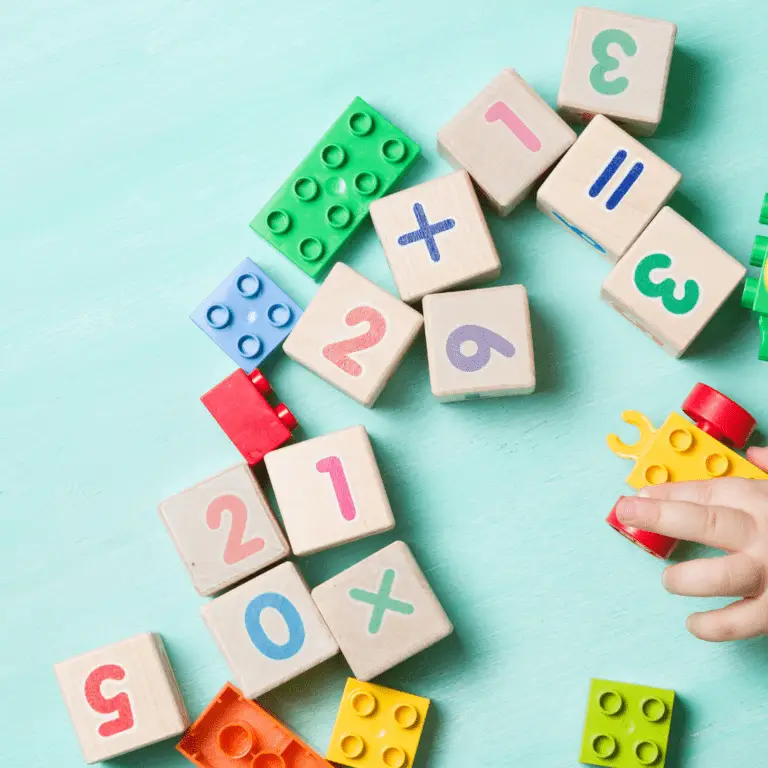
#20 – Building Blocks
This is an easy toy that children can play with by themselves or with an adult. Encourage your child to use different colors or shaped blocks to create a variety of items. A big tower is fun to build and then knockdown.
Don't be upset if your child crashes into your blockhouse you have just spent 15 minutes building because toddlers love to see the blocks all tumble down. You are likely to experience the same if you build sandcastles at the beach.
As your child develops and sees you having fun creating different types of buildings, your child will become more interested in the building process than in knocking down the blocks.
#21 – Dress Up Box
Many parents think you have to spend a fortune on proper dressing-up costumes of superheroes or other characters from movies and television to have a dress-up box, but toddlers rarely need full costumes and you may be surprised at how easy it is to create a dress-up box that gives your toddler hours of creative fun.
An adult's old white shirt can become a doctor's, nurse's or scientist's, or even a chef's coat. A few old scarves or sarongs can be used in so many ways, such as royal gowns, capes for superheroes or magicians, or dresses for fairies or elves.
A belt can create a safari suit or a tool belt to hang tools on to be a builder. A wooden stick with a star attached can be a magic wand for magicians or for fairies and old hats are wonderful for creating a dress-up. It might take a little bit of imagination, but your toddler will love dressing up in any “costume” you can create.
Explore your local opportunity or charity clothing store and you'll find many items you can use for a dress-up box at a minimal cost. If money is an issue, use craft time to create the elements of a dress-up.
A roll of cardboard can become a top hat, a string, and some dry noodles threaded on can become a pretty necklace for a queen, and a crown can be fashioned from cardboard cut into shape with mini jewels created by sticking on shiny stickers or little pieces of different colored papers.
Related Read: What is Pretend Play?
#22 – Role Play and Imagination Play
Once dressed up, your child will find role-play games easy. If dressing up as a doctor or a nurse, your toddler will be delighted to take your temperature, listen to your heart with a stethoscope (you can create one with string and dry noodles), and give you pretend medicine.
You can encourage your toddler to be a doctor with all their soft toys. A roll of bandage or an old scarf rolled around a limb can help a teddy bear or doll to look like a patient.
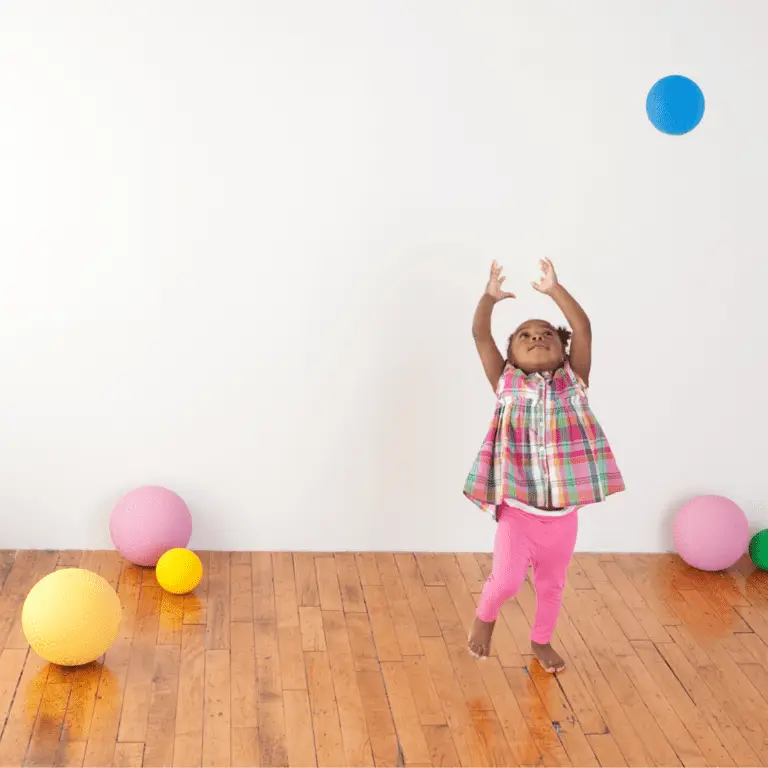
Imagination games that encourage role-play don't need dress-ups though. Can you be a tiger stalking around on a hunt by crawling on the floor and roaring?
Your toddler will love being any animal you can think of and creating animal sounds. The best thing about imagination games is that you don't even need anything except your own body and your voice.
Related Read: The BEST Art Activities for Toddlers to Do at Home
Your toddler will love being anyone else, even for a few minutes. Give your child a raincoat and boots, and let your toddler water the garden with the hose as a firefighter, or use a cardboard box to create a bus so your toddler can be a bus driver.
A few envelopes and an old handbag with a long strap can create a post bag for your little postman. You'll have fun working out different ways to encourage your toddler to be creative with imagination games and role-plays.
Related Read: Not to Be Missed Community Helper Activities for Preschoolers
#23 – Cooking Time
Getting your toddler involved in cooking is a great idea, especially if your child is a fussy eater, as toddlers are far more likely to try foods when they have been involved in the preparation process.
Toddlers love mixing cakes with a wooden spoon and a long sleeve art smock or a plastic apron that will protect clothes from stains.
Biscuits or cookies are easy to make and toddlers have fun using cookie cutters to cut the dough. Use a small plastic bag with a hole cut in at one end to create an easy-to-use icing bag if you don't have one, as your child will love helping to decorate cookies with icing.
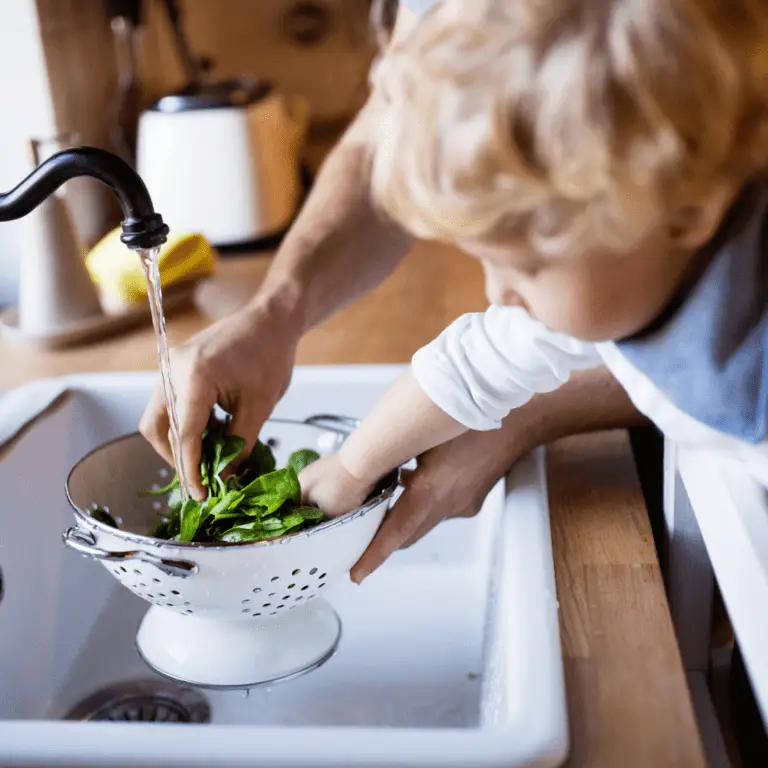
Don't just keep the cooking for sweet treats. Help your child to make a face with things like grated carrot or cheese for hair, grapes or olives cut in half for eyes, carrot or celery sticks for eyebrows, a piece of apple for a nose, and a tomato piece for a mouth, all on round pita bread for the face.
Use whichever fruits and vegetables your child likes to start with, and then use features of the face to offer your toddler a chance to try new foods.
Blend a fruit smoothie that you freeze in ice cube trays to create fun summer treats your toddler will love or use skewers for vegetables and fruits to create a rocket ship. Making food can be great fun and a lovely way to encourage creativity.
#24 – Give your child simple chores around the house to complete independently
Having children help with chores is a great way to keep them busy while teaching them useful abilities. Simple activities such as sorting laundry into lights and darks, organizing silverware, or folding clothes can all become fun games when done with a little bit of guidance.
Explain the importance of the task you’re presenting and show your child how to do it. Furthermore, allow your child to independently complete their chore — this will help build their confidence and instill in them a desire for exploration.
Allowing your child to explore many different creative outlets will help your child discover the joys of creativity and will help your child to find ways of expressing himself or herself.
Toddlers need ways to express their feelings in ways other than speaking and creative play will enable some of that to happen.
These activities will provide good physical and manual dexterity development, leading your child into activities that will enable learning at school.

